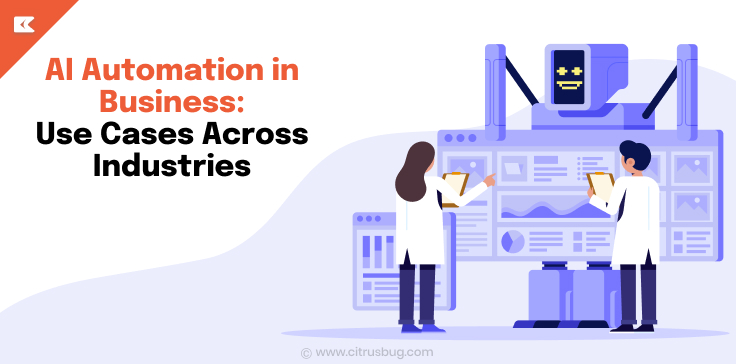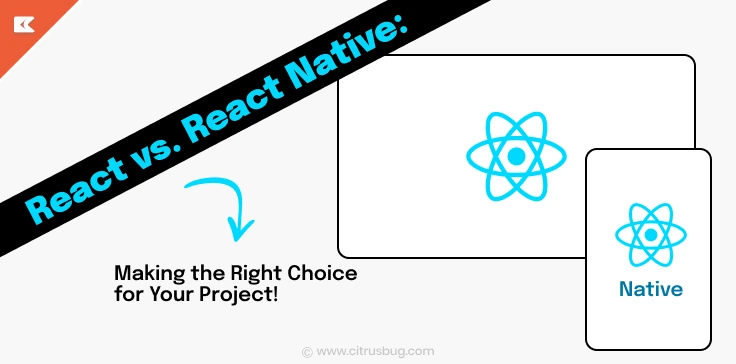7 Steps to Ensure SaaS Application Security with DevOps
- October 27, 2023
-
1692 Views
- by Ishan Vyas
Table of Contents

Image source: Freepik
In the age of digitization, SaaS apps have caused a fundamental change in the operational environment of enterprises. These cloud-based apps provide hitherto unrivaled scalability, accessibility, and cost-effectiveness. Nonetheless, despite the numerous benefits of SaaS, the difficulty of safeguarding these services has grown significantly. Data security, integrity, and availability in SaaS services are becoming important considerations for enterprises worldwide.
Many organizations, including software development companies, are using DevOps practices to solve these increased security risks. Alike, DevOps is a cultural and technological revolution that brings together software development (Dev) and IT operations (Ops) to simplify the software development lifecycle. DevOps, when done correctly, may greatly improve the security posture of SaaS services. This detailed post will go extensively into seven essential elements for ensuring SaaS application security with DevOps.
1. Cultivate a Security-First Mindset
Once the system is established, it is crucial to integrate security features like access controls, encryption, and routine security assessments. This restricted access ensures that only authorized individuals can use the system and access its data.
Encryption safeguards sensitive data from unauthorized access both during transmission and while at rest. Regular security audits assist in identifying potential vulnerabilities and evaluating the efficacy of existing security measures.
In addition to technical safeguards, it is critical to create policies and processes for dealing with security issues. This involves putting a strategy in place for reacting to security issues, training personnel on best security practices, and evaluating and updating security policies on a regular basis. To further reinforce these efforts, setting up a reliable VPN for Windows can ensure employees have secure access to company resources while maintaining a unified level of protection.
Another key facet of SaaS security is ensuring that third-party providers and partners follow tight security requirements as well. This involves performing due diligence on suppliers before doing business with them, forcing them to comply with security requirements, and evaluating their security practices on a regular basis.
2. Ingrain Secure Coding Practices
Because SaaS applications deal with sensitive data and information, secure coding practices are critical. Data breaches, loss of consumer confidence, and legal liabilities can all result from a lack of safe coding practices. Developers must thus be taught in secure coding practices and be aware of the most recent security threats and vulnerabilities.
It is advised that static code analysis tools be integrated into the development process to ensure the use of secure coding practices. These tools may scan code for security flaws and give developers with recommendations on how to repair them. Code reviews are also important since they enable developers to find and correct security flaws before the code is distributed.
3. Automate Security Testing
In the current dynamic and fiercely competitive digital landscape, DevOps has become an essential asset for enterprises aiming to swiftly and efficiently create software and services. DevOps employs automation to streamline and expedite the various processes associated with software development, testing, and deployment
Image source: Freepik
By incorporating Cloud and DevOps Services, you emphasize the connection between DevOps and cloud services, which is a common and significant aspect of modern software development and deployment.
Security, on the other hand, frequently takes a back seat as organizations seek to deliver software at an unparalleled rate. This is where including security testing in the DevOps process becomes critical.
Organizations may guarantee that security vulnerabilities are found and addressed early in the development process by including security testing tools such as SAST and DAST in the CI/CD pipeline.
SAST tools examine an application’s source code for possible security problems such as improper coding practices or known vulnerabilities in third-party libraries. Organizations may detect and address issues before they reach the production environment by automating this process.
This not only reduces the possibility of security breaches, but it also saves a substantial amount of time and resources that would otherwise be spent on manual code reviews.
DAST tools, on the other hand, mimic real-world assaults on operating programs in order to find vulnerabilities that may not be visible in the source code.
Organizations may continually monitor their apps for security flaws and resolve them quickly by automating this testing process. This proactive approach ensures that any vulnerabilities are remediated before they can be exploited by malicious actors.
Organizations may build a smooth and efficient workflow that prioritizes both speed and security by including security testing into the CI/CD pipeline. Automation ensures that programs are regularly monitored and tested, ensuring that any security flaws are identified and corrected as soon as possible.
4. Embrace Continuous Integration and Continuous Deployment (CI/CD)
Organizations can guarantee that possible vulnerabilities are spotted and handled before they become big concerns by including automated security scans and tests in the CI/CD pipeline. Static code analysis, dynamic application security assessment, and software composition analysis are examples of these scans.
Static code analysis is the process of examining source code for potential security problems such as improper coding practices or known vulnerabilities. This assists developers in identifying and correcting flaws early on, minimizing the probability of future security breaches.
Dynamic application security testing is performing tests on the program while it is operating in order to uncover vulnerabilities that may be hidden in the source code. This can involve testing for typical security flaws such as SQL injection and cross-site scripting.
The goal of software composition analysis is to discover any third-party libraries or components utilized in the program that may be vulnerable. Organizations may guarantee that they are utilizing the most secure versions and resolve any vulnerabilities that may occur by keeping track of the versions and dependencies of these components.
Organizations may guarantee that security is not an afterthought in the development process by including these automated security scans and tests in the CI/CD pipeline. This reduces the risk of security breaches and guarantees that software is delivered confidently.
5. Fortify Container Security
Containerization, as illustrated by Docker and Kubernetes, has evolved into an essential component of current DevOps practices. Containerization provides fast deployment, scalability, and portability by isolating applications and their dependencies in separate containers. However, as containerization becomes more popular, the requirement for strong container security has grown critical.
When a SaaS application is containerized, container security must be prioritized. Container scanning technologies are quite useful in this aspect. These programs extensively examine container images in order to find any potential vulnerabilities or flaws.
Organizations may resolve security vulnerabilities before deploying containers into production settings by scanning the images. This aids in the prevention of potential breaches or assaults on the application and its supporting infrastructure.
In addition to container scanning, strong security standards must be enforced to provide runtime protection and the security of containerized programs. These policies should cover a wide variety of subjects, including access controls, network segmentation, and vulnerability management. By implementing effective security measures, organizations may limit the risk of unauthorized access, data breaches, and other security incidents.
Additionally, organizations should consider developing runtime protection techniques to actively monitor and defend containerized programs while they are running. This may entail employing intrusion detection systems, log analysis tools, and real-time monitoring solutions to detect and respond to any suspicious activity or anomaly. Organizations can quickly detect and mitigate possible security issues by continually monitoring the runtime environment, assuring the integrity and availability of their containerized applications.
6. Implement Role-Based Access Control (RBAC)
RBAC is a security approach that controls access to application resources and functions based on the roles and permissions provided to individual users. This implies that users only have access to the resources and functions required for their unique job within the organization. RBAC is especially critical in SaaS services, as several users may access the same application from various locations and devices.
RBAC in SaaS systems is implemented by DevOps teams, which includes establishing roles and permissions, assigning users to those roles, and configuring access restrictions. This procedure necessitates meticulous preparation and attention to detail, as mistakes or oversights can lead to security risks and data breaches.
DevOps teams may greatly minimize the risk of unauthorized access and data breaches by utilizing RBAC. This is because RBAC guarantees that users only have access to the resources and capabilities required for their position and are not permitted to view sensitive data or conduct activities that might jeopardize the application’s security.
7. Maintain Regular Updates and Patching
In today’s digital world, where cyber threats are continually changing and getting more complex, organizations must prioritize regular software component updates. This covers not just in-house produced application code, but also third-party libraries, frameworks, and system dependencies.
One of the most important reasons for regular upgrades is to ensure security. Every day, new software defects are discovered, and hackers are quick to exploit them. Organizations may reduce the risk of unauthorized access, data breaches, and other dangerous actions by keeping software components up to date.
To properly handle software upgrades, a well-defined method must be established. This method should involve frequent monitoring of software vendor and security organization security warnings and alerts. Organizations can quickly analyze the impact on their software components and take necessary action if they remain up to date on the newest vulnerabilities and fixes.
An important part of the updating process is the timely implementation of security updates. Patches are especially developed to resolve discovered vulnerabilities and security flaws. By implementing these updates as soon as possible, organizations may shut potential entry points for attackers and improve their overall security posture.
Consistent updates and patching are critical in protecting against discovered vulnerabilities. Hackers frequently target known vulnerabilities because they are more likely to be exploited.
Organizations may keep one step ahead of prospective attackers and dramatically minimize the likelihood of successful assaults by frequently upgrading software components. Additionally, investing in low-cost or cheap SSL certificates to secure data transmission can improve overall security.
Conclusion
Securing SaaS apps inside a DevOps architecture is a continuous process that necessitates proactive and collaborative efforts. Organizations may dramatically improve the security of their SaaS services while capitalizing on the agility and efficiency provided by DevOps practices by applying the ten thorough measures detailed in this article.
It is critical to recognize that security is a long-term commitment rather than a one-time effort. Organizations must maintain vigilance in remaining educated about emerging dangers and security best practices, as well as consistently adjusting their DevOps processes to handle changing issues.
Organizations can create and manage SaaS systems that are robust to modern cybersecurity threats by prioritizing security from the start, integrating it into every aspect of the development lifecycle, and implementing a security-first culture. In this dynamic landscape, the fusion of DevOps and security is not just a trend but an imperative for safeguarding the digital future.





 SaaS Development
SaaS Development Web Application Development
Web Application Development Mobile Application Development
Mobile Application Development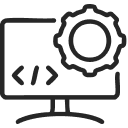 Custom Software Development
Custom Software Development Cloud Development
Cloud Development DevOps Development
DevOps Development MVP Development
MVP Development Digital Product Development
Digital Product Development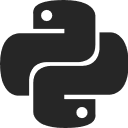 Hire Python Developers
Hire Python Developers Hire Django Developers
Hire Django Developers Hire ReactJS Developers
Hire ReactJS Developers Hire AngularJS Developers
Hire AngularJS Developers Hire VueJS Developers
Hire VueJS Developers Hire Full Stack Developers
Hire Full Stack Developers Hire Back End Developers
Hire Back End Developers Hire Front End Developers
Hire Front End Developers AI Healthcare Software Development & Consulting
AI Healthcare Software Development & Consulting Healthcare App Development
Healthcare App Development EHR Software Development
EHR Software Development Healthcare AI Chatbot Development
Healthcare AI Chatbot Development Telemedicine App Development Company
Telemedicine App Development Company Medical Billing Software Development
Medical Billing Software Development Fitness App Development
Fitness App Development RPM Software Development
RPM Software Development Medical Device Software Development
Medical Device Software Development Patient Engagement Software Solutions
Patient Engagement Software Solutions Healthcare IT Consulting
Healthcare IT Consulting Mental Health App Development
Mental Health App Development Lending Software Development Services
Lending Software Development Services Payment Gateway Software Development
Payment Gateway Software Development Accounting Software Development
Accounting Software Development Mobile Banking Software Development
Mobile Banking Software Development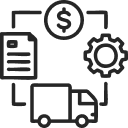 Supply Chain Management Software Development
Supply Chain Management Software Development Fleet Management Software Development
Fleet Management Software Development Warehouse Management Software Development
Warehouse Management Software Development LMS Development
LMS Development Education App Development
Education App Development Inventory Management Software Development
Inventory Management Software Development Property Management Software Development
Property Management Software Development Real Estate CRM Software Development
Real Estate CRM Software Development Real Estate Document Management Software
Real Estate Document Management Software Construction App Development
Construction App Development Construction ERP Software Development
Construction ERP Software Development














